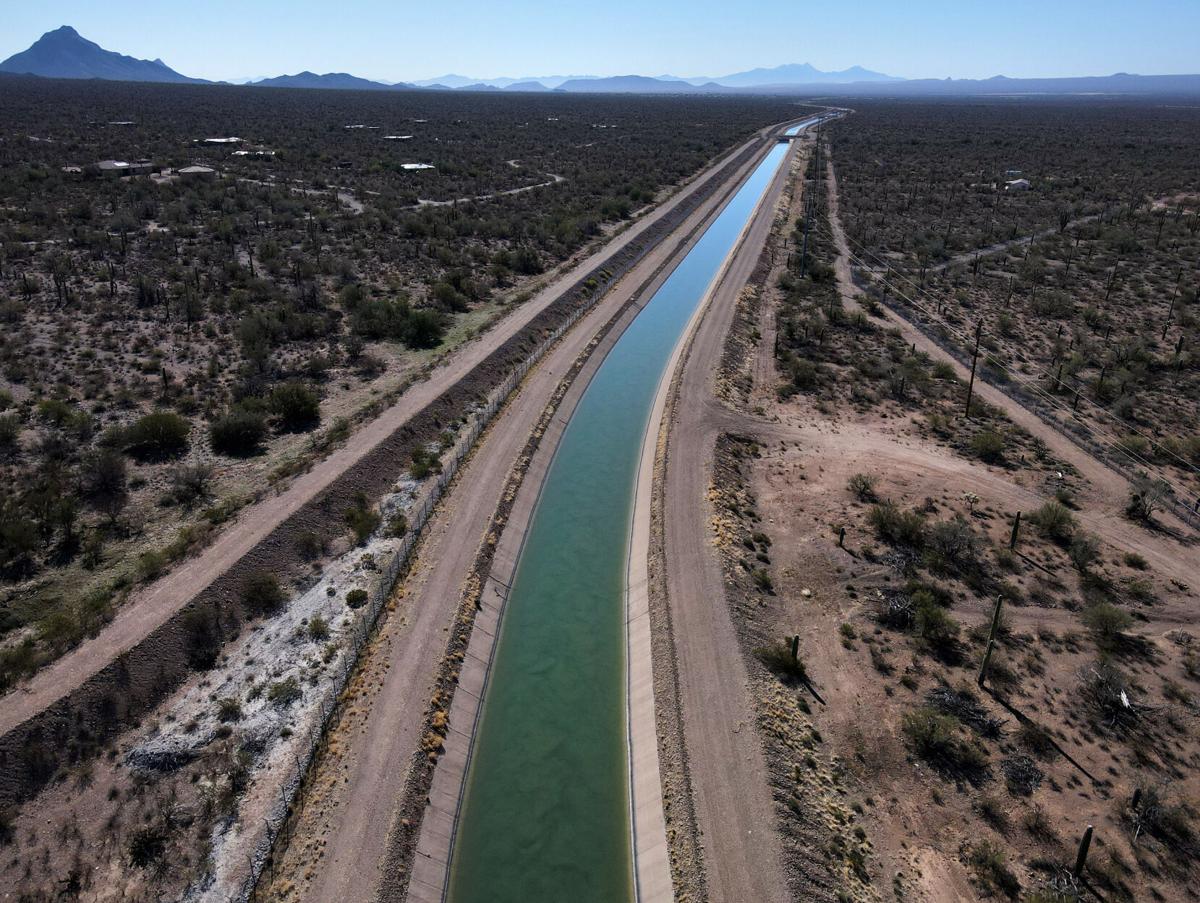Tucson is prepared to leave up to 110,000 acre-feet of its CAP drinking water supply in Lake Mead in the next three years to help prop up the declining reservoir, Mayor Regina Romero announced Thursday.
The city will leave 50,000 acre-feet — more than one-third of its total annual Central Arizona Project supply — in the lake in 2023, and up to 30,000 acre-feet annually in both 2024 and 2025, the mayor’s office said in a news release.
Tucson will be compensated by the U.S. Bureau of Reclamation for leaving that water in the lake, under a new federal water system conservation program providing drought relief money for the West, particularly the Colorado River Basin. How much money the city will get wasn’t disclosed Thursday.
Romero announced details of the pending agreement during a visit to an aquifer recharge site run by the Gila River Indian Community in Sacaton, south of Phoenix.
At this visit, the Gila River Indian Community also announced it will get $233 million over the next three years in return for conserving a little more than 200,000 acre-feet of Colorado River water a year during that period.
The compensated water cutbacks by Tucson and the tribe are the first to be announced of what’s expected to be $250 million worth of federal payouts this year to various Colorado River Basin water users to leave water in the river.
Lake Mead was nearly at its full, 1,200-foot level at the turn of this century. But today it stands at 1,045 feet due to a long-term drought that scientists say has been aggravated by human-caused climate change.
Officials are concerned that if the lake is allowed to keep declining, it could someday fall below 950 feet, at which elevation Hoover Dam could no longer generate electricity. At 895 feet, Mead would hit “dead pool,” at which point no more water could be extracted from the reservoir.
“Tucson is ready to join with the Gila River Indian Community and other partners to help protect the Colorado River system,” Romero said in Thursday’s news release. “Tucson’s ethic as a national leader on water conservation has positioned us to lead in this historic effort. Under the authority from my members on the Council I am prepared to take this historic next step to support a sustainable and thriving community and protect Tucson’s economy into the future.”
Stephen Lewis, governor of the Gila River Indian Community, said in the release, “I am proud that Arizona as a whole is stepping up to the challenge of a dwindling Colorado River. Tucson has been a leader in system conservation for the benefit of the Colorado River system, and today is no different. Their commitment to the Lower Colorado System Conservation Program will lead to a foot of critical elevation in Lake Mead and I am so proud of our partnership in making commitments for the good of our state and our region.”
Tucson will use the funds to support future water infrastructure projects to make the water supply more resilient and the city’s system more efficient, and to address local water quality challenges such as PFAS, the city’s news release said.
U.S. Sen. Mark Kelly, D-Arizona, has described the $250 million as a “Band-aid” that will help keep Lake Mead from falling to critically low levels in the short term. He and other officials say much more help and more cutbacks will be needed to stabilize lakes Mead and Powell for the long term.
The funds going to Tucson and the bulk of those going to the Gila tribe will come from last year’s Inflation Reduction Act, which approved major federal investments aimed at tackling climate change and addressing its impacts. Some of the tribe’s funds will come from the 2021 Bipartisan Infrastructure Law. Both laws contained significant amounts of money to help drought-stricken Western communities, with $4 billion for that coming from the Inflation Reduction Act.
Through these laws, “we have historic, once-in-a-generation investments to expand access to clean drinking water for families, farmers and tribes,” Deputy Interior Secretary Tommy Beaudreau said Thursday. “In the wake of record drought throughout the West, safeguarding tribal access to water resources could not be more critical. These types of agreements will support tribal communities through essential water infrastructure projects and support water conservation in the Colorado River system.”
Longtime Arizona Daily Star reporter Tony Davis explains what "dead pool" means as water levels shrink along the Colorado River.






